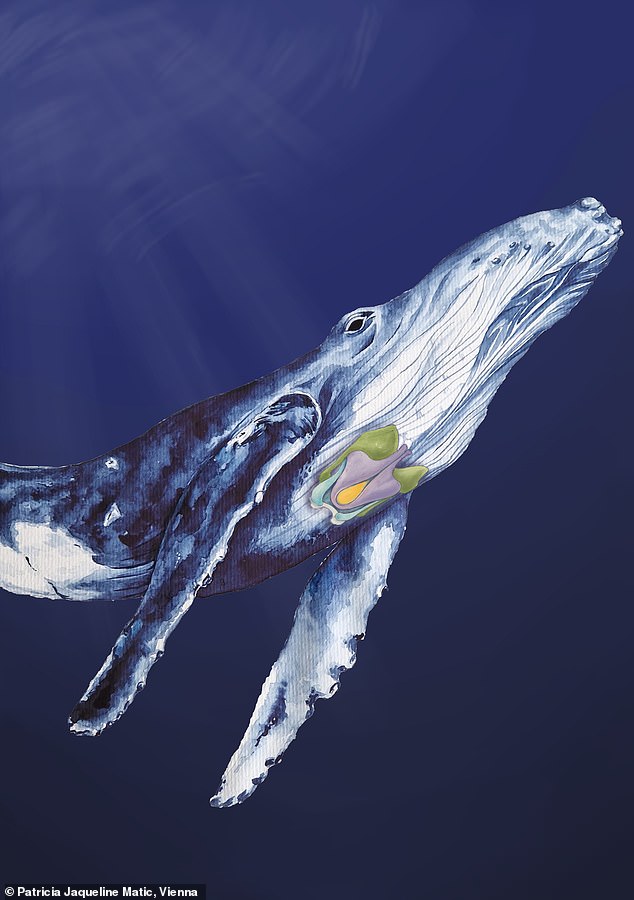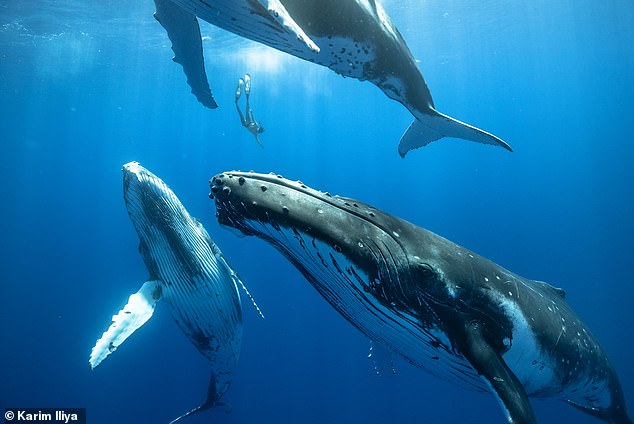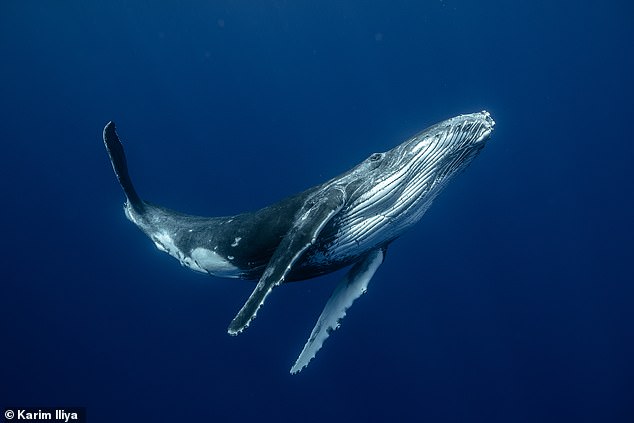Mystery of whale songs revealed: Scientists discover how marine mammal melodies travel miles through the ocean
Whales have many talents, but perhaps their most unique and mysterious is their hauntingly beautiful song. And scientists finally know how to do it.
The secret is a unique voice box that vibrates fat and muscle to produce sounds, instead of blowing air through them.
Singing underwater poses a difficult problem because, in theory, it would use up all your air.
But according to a new study by an international team of scientists, whales have evolved a vocal sound that’s different from most other mammals.
It also provides insight into the whales’ limited vocal range, something that could leave them vulnerable to their sounds being drowned out by ship engines and other human noise.
A humpback whale breaches near Bering Island, Kamchatka. Humpback whales and other baleen whales produce sound by circulating air through a unique structure in their throats
Whales have even been observed learning complex songs from each other.
The new study is small and conducted with just three whales, but provides the first answer to the question of how the songs of the world’s largest animals can travel miles through the ocean.
Until now, scientists didn’t know exactly how these ocean giants were able to accomplish their signature feat.
The untimely deaths of three whales gave scientists the opportunity to investigate the animals’ vocal anatomy.
Dead whales used in the study died of natural causes or accidents, the scientists behind the study wrote.
A male sei whale was found near Denmark, and although the cause of death was uncertain, scientists described him as emaciated.
A female humpback whale likely drowned after becoming entangled in fishing gear, and the female minke whale likely died of a bacterial infection, the researchers wrote.
These whales are all baleen whales, different from toothed whales.
Baleen whales feed by filtering water through giant comb-like plates that capture marine invertebrates and small fish.
To find out how the whales make sounds, the team, led by Coen Elemans of the University of Southern Denmark, dissected each animal’s larynx and blew air through it to see what would happen.
What they discovered was that the whale’s voice box does not work in the same way as a vocal cord.
The study was published in the magazine Nature.

This painting of a humpback whale shows the cartilage of the animal’s pharynx, part of the structures that produce sound
Instead, a U-shaped piece of tissue vibrates against the fat and muscle structures in the whale’s throat.
Blowing air through these structures in the laboratory created the deep, resonant sounds that whales are known for.
And their unique anatomy allows whales to recycle air and avoid breathing water as they sing.
It was ‘super exciting’ to find this out, Elemans told BBC news.

Three young humpback whales swim with a diver. The special vocal structure of baleen whales allows them to sing for long periods of time without having to breathe – and without drowning

Whales’ songs travel great distances but can be drowned out by boat motors and other human activities
“This is the most comprehensive and significant study to date on baleen whale vocalizations, a long-standing mystery in the field,” Jeremy Goldbogen told The AP. Goldboog, an associate professor of oceans at Stanford University, was not involved in the research.
These results open doors for future research, he said, “given the extraordinarily diverse acoustic repertoires” of whales.
Unfortunately, the research also shows how vulnerable the animals are to human activities.
A computer analysis of the vocal structures showed that there is a narrow frequency range of sounds that whales can make, making them vulnerable to disruption.
Because ships and other human activities produce sounds in the same range as whale songs, and because whales use their songs to find mates, human activity can make it difficult for whales to find each other and reproduce.
“They cannot simply choose to sing higher, for example, to avoid the noise we make in the ocean,” says Elemans.
And while this may not be as much of a problem for humpback whales and other species that live in groups, blue whales that travel long distances solo may be more vulnerable to human shipping and other activities that create undersea noise.
